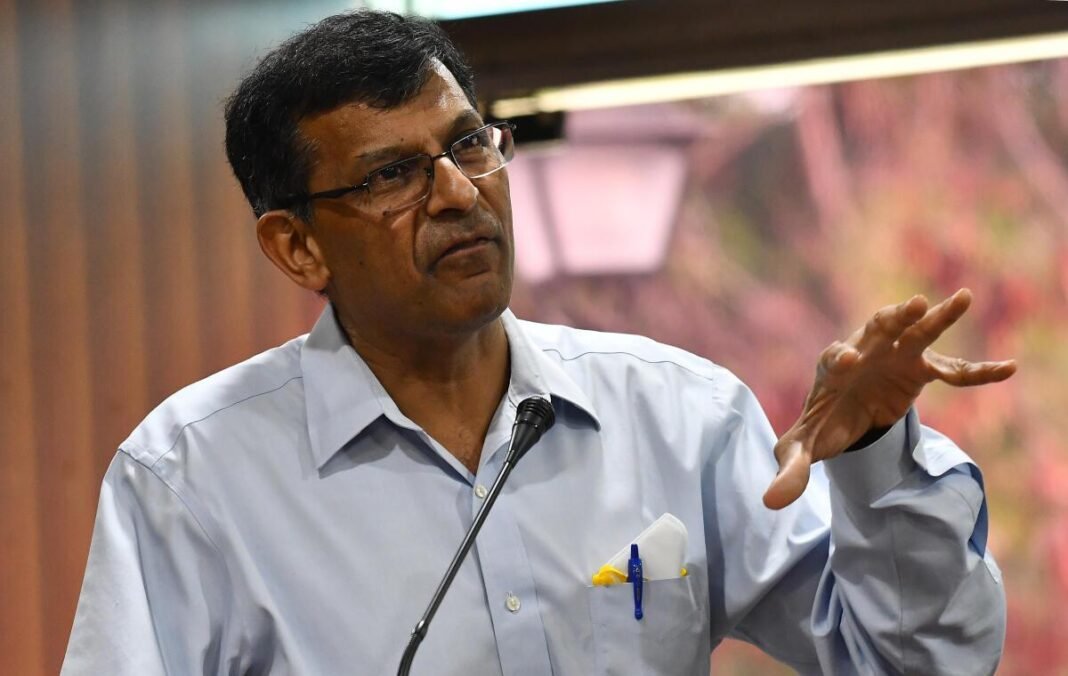NEW DELHI, March 5 (PTI): Sounding a note of caution, former Reserve Bank Governor Raghuram Rajan has said that India is “dangerously close” to the Hindu rate of growth in view of subdued private sector investment, high interest rates and slowing global growth.
Rajan said that sequential slowdown in the quarterly growth, as revealed by the latest estimate of national income released by the National Statistical Office (NSO) last month, was worrying.
Hindu rate of growth is a term describing low Indian economic growth rates from the 1950s to the 1980s, which averaged around 4 per cent. The term was coined by Raj Krishna, an Indian economist, in 1978 to describe the slow growth.
The Gross Domestic Product (GDP) in the third quarter (October-December) of the current fiscal slowed to 4.4 per cent from 6.3 per cent in the second quarter (July-September) and 13.2 per cent in the first quarter (April-June).
The growth in the third quarter of the previous financial year was 5.2 per cent.
“Of course, the optimists will point to the upward revisions in past GDP numbers, but I am worried about the sequential slowdown. With the private sector unwilling to invest, the RBI still hiking rates, and global growth likely to slow later in the year, I am not sure where we find additional growth momentum,” Rajan said in an email interview to PTI.
Recently, chief economic advisor V Anantha Nageswaran had attributed the subdued quarterly growth to the upward revision of estimates of national income for the past years.
The key question is what Indian growth will be in fiscal 2023-24, Rajan said, adding “I am worried that earlier we would be lucky if we hit 5 per cent growth. The latest October-December Indian GDP numbers (4.4 per cent on year ago and 1 per cent relative to the previous quarter) suggest slowing growth from the heady numbers in the first half of the year.
“My fears were not misplaced. The RBI projects an even lower 4.2 per cent for the last quarter of this fiscal. At this point, the average annual growth of the October-December quarter relative to the similar pre-pandemic quarter 3 years ago is 3.7 per cent.
“This is dangerously close to our old Hindu rate of growth! We must do better.”
The government, he said, was doing its bit on infrastructure investment but its manufacturing thrust is yet to pay dividends.
The bright spot is services, he said, adding “it seems less central to government efforts.”
On a query regarding the production-linked incentive (PLI) scheme, Rajan said any scheme in which the government pours money will create jobs and any scheme which elevates tariffs on output while offering bonuses for final units produced in India will create production in India, and exports.
“A sensible evaluation would ask how many jobs are being created and at what price per job. By the government’s own statistics, 15 per cent of the proposed investment has come in but only 3 per cent of the predicted jobs have been created. This does not sound like success, at least not yet,” Rajan said.
Furthermore, even if the scheme fully meets the government’s expectations over the next few years, it will create only 0.6 crore jobs, a small dent in the jobs India needs over the same period, the former RBI Governor said.
“Similarly, government spokespersons point to the rise in cell phone exports as evidence that the scheme is working. But if we are subsidising every cell phone that is exported, this is an obvious outcome. The key question is how much value added is done in India. It turns (out to be) very little so far,” he said.
Rajan said cell phone parts imports have also gone up, so net exports in the cell phone sector, the relevant measure that no one in government talks about, is pretty much where it was when the scheme started.
“Except, we have also spent money on subsidies. Foxconn just announced a big factory to produce parts but they have been saying they will invest for a long time. I think we need a lot more evidence before celebrating the success of the PLI scheme,” he said.
Currently, Rajan is the Katherine Dusak Miller Distinguished Service Professor of Finance at The University of Chicago Booth School of Business.
He further said the most developed economies of the world are largely service economies, so you can be a large economy without a large presence in manufacturing.
“Services do not just account for the majority of our unicorns, services can also provide a lot of semi-skilled jobs in construction, transport, tourism, retail, and hospitality.
“So let us not deride service jobs – indeed while the fraction of manufacturing jobs has stagnated in India, services have absorbed the exodus from agriculture.”
“We need to work on both manufacturing and services to create the jobs we need, and fortunately, many of the inputs both (services and manufacturing) need schooling, skill…,” he said.
On what measures the government should take to improve oversight of private family companies to address worries after the Hindenburg allegations on Adani Group, Rajan said: “I don’t think the issue is of more oversight over private companies.”
The issue is of reducing non-transparent links between government and business, and of letting, indeed encouraging, regulators do their job, he said.
“Why has SEBI not yet got to the bottom of the ownership of those Mauritius funds which have been holding and trading Adani stock? Does it need help from the investigative agencies?” Rajan wondered.
Adani group has been under severe pressure since the US short-seller Hindenburg Research on January 24, accused it of accounting fraud and stock manipulation, allegations that the conglomerate has denied as “malicious”, “baseless” and a “calculated attack on India”.












